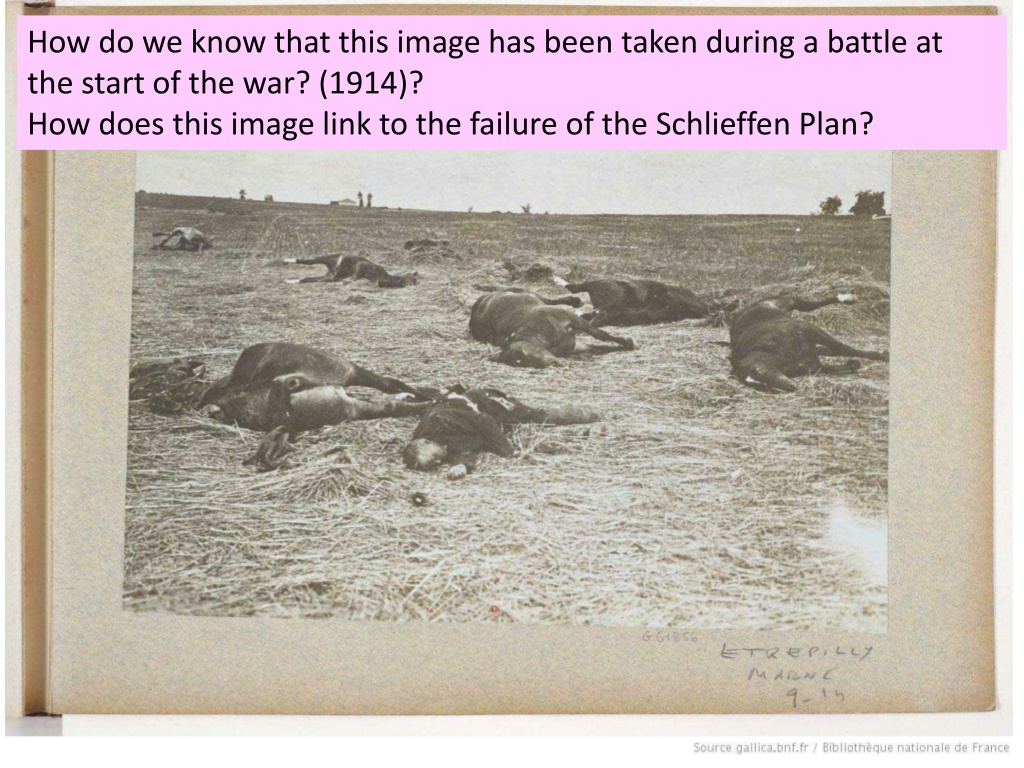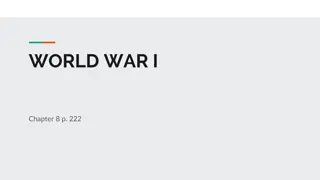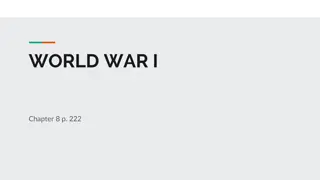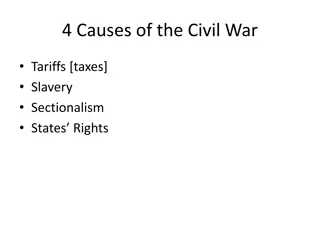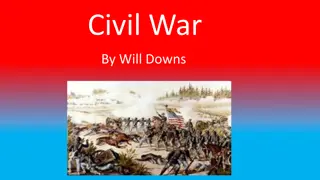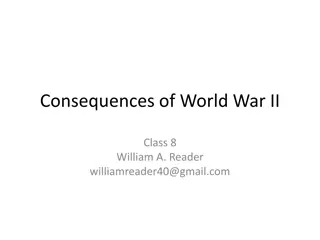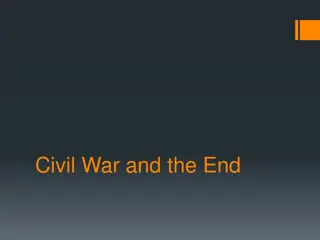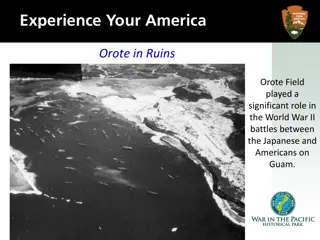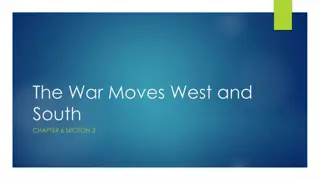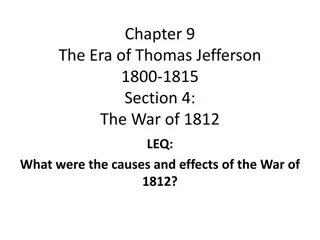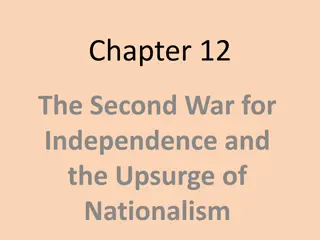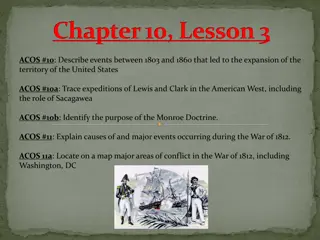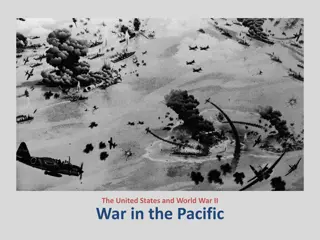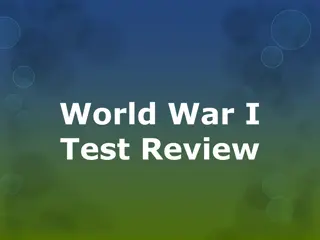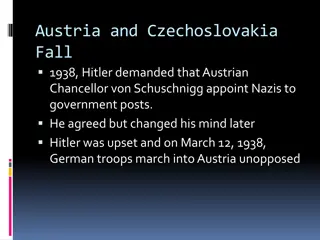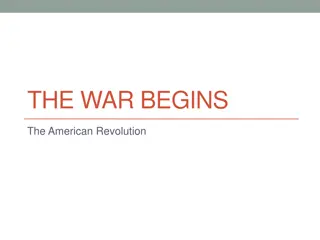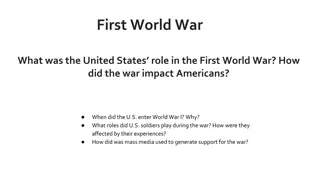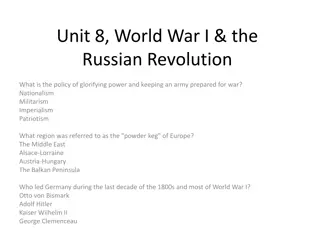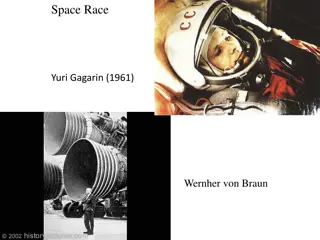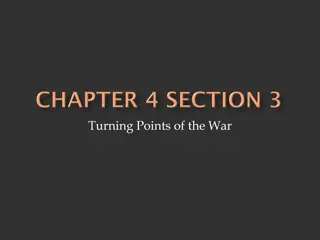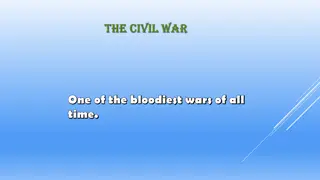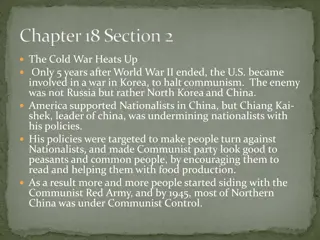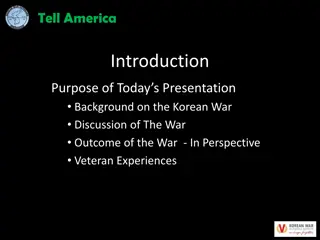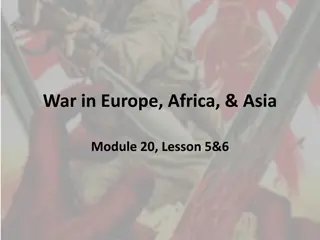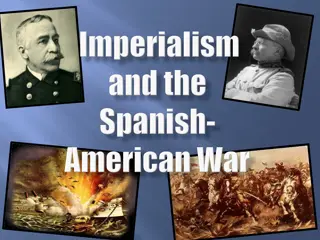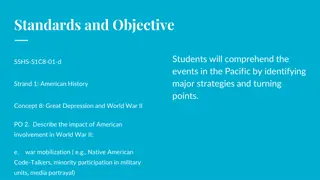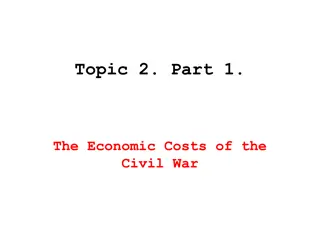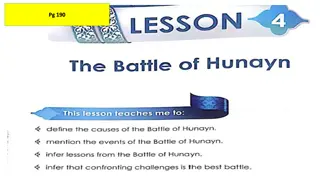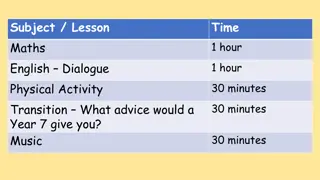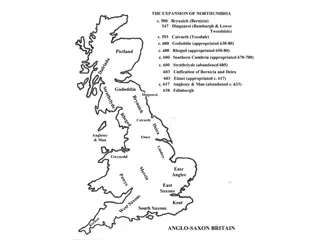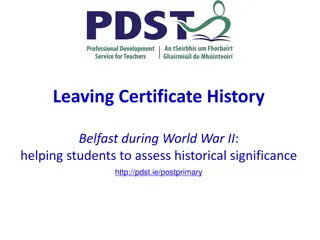The Fortunes of the Entente: World War I Battles and Strategies
In this historical analysis, we delve into the pivotal battles of World War I and the strategic shifts that impacted the fortunes of the Entente. From examining the failure of the Schlieffen Plan to tracing the timeline of battles and outcomes, students are challenged to chart and understand the changing dynamics of the war. Through images and assessments, this lesson provides a deep dive into the complexities of trench warfare and the fortunes of the opposing alliances.
Uploaded on Oct 02, 2024 | 0 Views
Download Presentation

Please find below an Image/Link to download the presentation.
The content on the website is provided AS IS for your information and personal use only. It may not be sold, licensed, or shared on other websites without obtaining consent from the author. Download presentation by click this link. If you encounter any issues during the download, it is possible that the publisher has removed the file from their server.
E N D
Presentation Transcript
How do we know that this image has been taken during a battle at the start of the war? (1914)? How does this image link to the failure of the Schlieffen Plan?
What is surprising about this image? Where are these soldiers from?
How did the fortunes of the Entente change during the war? Today I will practice: How to sort dates into chronological(time) order How to identify and explain different types of changein History Last lesson, we looked at why World War I became a battle of trench warfare. Why wasn t it over by Christmas ? G________ M_________ D__________ N_______ T___________ E________ R________. After the failure of the Schlieffen Plan, the Triple Alliance faced the Triple Entente in a system of trenches that ran all the way from the English Channel and down to Switzerland. Mostly, trench warfare was a lot of waiting and boredom. Yet also along this line of trenches, and elsewhere, some important battles were fought. This overview lesson will focus on the most important battles of World War I how did the Triple Entente do? Did their fortunes get better as time went on? http://www.ksspharmacy.nhs.uk/dyn/_pictures/_folder3/crossroads.jpg
How did the fortunes of the Entente change during the war? Failure Success 1914 TASK: Record on your chart 1915 Name of the battle Date of the battle One sentence summary of the battle Reason for position on the chart (success/failure/mixed) 1916 1917 Challenge: In a different colour, plot Alliance success/failure for each battle. When the Entente did badly, did this always mean the Alliance did well? 1918
Self-Assessment: Failure Success How did the fortunes of the Entente change during the war? 1914 2 1 3 4 1915 5 1916 6 7 1917 8 9 10 1918
How did the fortunes of the Entente change during the war? CONCLUDING TASK: Working together as a class, identify which image corresponds to which battle, then place the images in order.
After this battle, where the BEF and the French met the Germans for the first time, the Germans managed to drive the British back to a river just outside of Paris. Battle of Mons, 23 August 1914
This battle took place early on in the war and was a disaster for the Russians around 92,000 of them were taken prisoner by the Germans. Battle of Tannenburg, August 1914
This battle ensured that the Germans were prevented from occupying the whole of France BEF and French forces stopped them. Yet at a heavy cost. The German army then retreated in good order and dug in for the long haul. First Battle of the Marne, 6-10th September 1914
In this battle, the Germans attacked a town near to the sea for four weeks, in order to regain the town as it had important access to channel seaports. The BEF held on, yet at a huge cost the BEF was effectively destroyed here. First Battle of Ypres, Oct-Nov 1914
In this drawn-out campaign planned by Churchill, the British attacked Turkey, to try to gain access to Russia through the Mediterranean. Just over 200,000 British men were killed or injured here and it was almost a complete failure. Gallipoli Campaign, 1915
Here, during the longest battle of the First World War, the Germans attacked the strongest part of the French line of trenches, to try to effectively destroy the French army. The French held on, yet lost over half a million men. Battle of Verdun, Dec 1914-Dec 1916
In this battle, the Germans decided to take on the might of the British navy. The Germans claimed victory (the British lost more battleships), but the battle ensured that the German navy was finished as a fighting force. Battle of Jutland, May 1916
In this battle, the British beat the Turkish army in order to take control of Jerusalem yet at a very heavy cost, and for no real strategic value. Battle of Gaza, Summer/Autumn 1917
In this battle, British general Sir Douglas Haig attacked the German army, thinking they were close to collapse. The fighting was made even harder by the rains, turning the landscape into a swamp. Battle of Passchendaele (Third Battle of Ypres), 1917
In this battle, British, French and American troops counterattacked against a German offensive. The battle marked the last real attempt by the Triple Alliance to win the First World War. Second Battle of the Marne, July 1918
The British went from total defeat to total success during World War One . To what extent do you agree with this statement?
After this battle, where the BEF and the French met the Germans for the first time, the Germans managed to drive the British back to a river just outside of Paris.
This battle took place early on in the war and was a disaster for the Russians around 92,000 of them were taken prisoner by the Germans.
This battle meant that the Germans were prevented from occupying the whole of France BEF and French forces stopped them. Yet at a heavy cost. The Germans then retreated in good order and dug in for the long haul.
In this battle, the Germans attacked a town near to the sea for four weeks, in order to regain the town as it had important access to channel seaports. The BEF held on, yet at a huge cost the BEF was effectively destroyed here.
In this drawn-out campaign planned by Churchill, the British attacked Turkey, to try to gain access to Russia through the Mediterranean. Just over 200,000 British men were killed or injured here and it was almost a complete failure.
Here, in the longest single battle of World War I, the Germans attacked the strongest part of the French line of trenches, to try to effectively destroy the French army. The French held on, yet lost over half a million men.
In this battle, the Germans decided to take on the might of the British navy. The Germans claimed victory (the British lost more battleships), but the battle ensured that the German navy was finished as a fighting force.
In this battle, the British beat the Turkish army in order to take control of Jerusalem yet at a very heavy cost, and for no real strategic value.
In this battle, British general Sir Douglas Haig attacked the German army, thinking they were close to collapse. The fighting was made even harder by the rains, turning the landscape into a swamp.
In this battle, British, French and American troops counterattacked against a German offensive. The battle marked the last real attempt by the Central Powers (or Triple Alliance ) to win the First World War.
